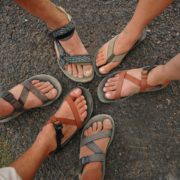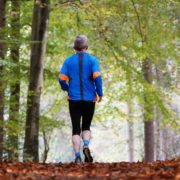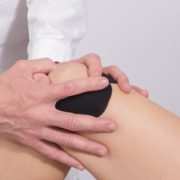Don’t let Plantar Fasciitis Ruin Flip Flop Season
Good weather is on its way and if you haven’t already broken out your flip flops – it’s only a matter of time before you do. The only unfortunate thing about flip flop season is the coinciding rise in plantar fasciitis that typically comes with it.
Someone I was speaking with the other day recently asked:
“Now that I’m wearing flip flops again, my plantar fasciitis is acting up. Is there anything I can do? Or do I need to stop wearing flip flops altogether?”
This is a great question.
While yes, wearing more supportive shoes would certainly help. Ideally, if you can stay on top of your plantar fasciitis and/or prevent it all together, flip flops don’t have to be an issue at all and you can continue enjoying them all season long.
First – what is plantar fasciitis?
Quite simply, it’s inflammation of your plantar fascia – the tissue that makes up the arch (bottom) of your foot. Your plantar fascia runs from the base of your heel, down the length of your foot, and into your toes. It’s responsible for both the mobility and stability of your foot so that you can propel yourself during walking and running. When you land on your foot your arch falls or flattens – this is called pronation.
The response to this action is that your foot then stiffens or supinates. This is where your foot gets the power to push off. If any part of this mechanism is not functioning properly, your plantar fascia can become stressed and overworked. This leads to inflammation/plantar fasciitis.
What causes your plantar fascia to become inflamed?
Basically, it can be anything that impacts or disrupts the natural mechanics of your foot to pronate and supinate. Most commonly, poor mobility in either your ankle or 1st toe is the culprit. Even tight hips and weak glutes can cause problems all the way down to your foot. Anything that impacts the way your foot hits the ground has an opportunity to influence the level of force and energy transmitted through your plantar fascia when you walk.
When the natural pronation/supination mechanism is disrupted, your plantar fascia will attempt to compensate. If this goes on uncorrected, your plantar fascia eventually becomes angry and irritated – resulting in a very painful case of plantar fasciitis.
So what do flip flops have to do with this?
Footwear can either “protect” your arch, or cause it to overwork. If your foot mechanics are sound and the arch of your foot is strong and mobile, footwear should have a negligible impact on your plantar fascia. But because of how much we sit, and how little we walk around barefoot, the bottoms of our feet are simply not as conditioned as they should be.
This is really the problem – not so much what you put on your feet. If you’re accustomed to wearing supportive and cushioned shoes all the time, and then suddenly switch to flatter, less supportive flip flops, it’s going to be a shock to your foot. And if you’re prone to plantar fasciitis already, it will flare up easily and quickly.
What can you do?
The best thing you can do to prevent and treat plantar fasciitis is to not neglect your feet. Performing consistent mobility exercises for your toes and ankles is key, as well as conditioning for the strength and stability of your arch.
Balance exercises, toe exercises, and plyometric (jumping) exercises are all important. Also, making it a point to walk around without shoes as often as you can. Along with all of this, it’s a good idea to incorporate pelvic floor and core training exercises. The function of your pelvis can have a significant impact on your foot mechanics.
But what if your plantar fasciitis is too painful?
If this is the case, jumping into exercises may not help, and could even aggravate your plantar fasciitis.
But one treatment modality that is known to be effective for particularly painful cases is something called Shockwave Therapy (Extracorporeal Pulse Activation Technology or EPAT).
During a shockwave treatment, high pressure sound waves are delivered directly to the affected tissue to bring blood flow and accelerated healing to the injured and inflamed area (in this case your plantar fascia and surrounding muscles).
The treatment is non-invasive and gets very deep. Pain reduction can be seen in as little as one shockwave session, but the research shows the most effectiveness after six.
Shockwave therapy can help to significantly reduce your pain – and even swelling – from plantar fasciitis in the short-term. It will allow you to tolerate the exercises required to keep your plantar fasciitis gone for the long-term.
When addressed correctly, plantar fasciitis doesn’t have to be chronic and it doesn’t have to dictate your footwear selection.
Are you local to Portsmouth, NH?
CLICK HERE to learn more about our Shockwave Therapy treatment – one of my specialists will reach out to you and see if you would be a good fit.
If you’ve already tried a lot of different treatments for your plantar fasciitis and they haven’t helped – consider working with an expert. They can incorporate something like shockwave therapy. This combined with the exercises you need will make a difference and get you back to enjoying your flip flops again.
Dr. Carrie Jose, Physical Therapist and Pilates expert, owns CJ Physical Therapy & Pilates in Portsmouth and writes for Seacoast Media Group. To get in touch, email her at [email protected].







